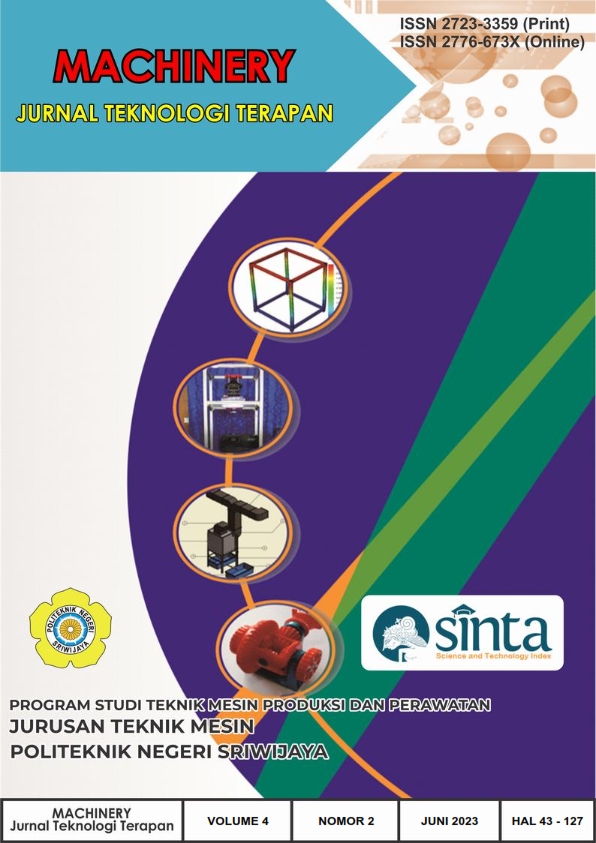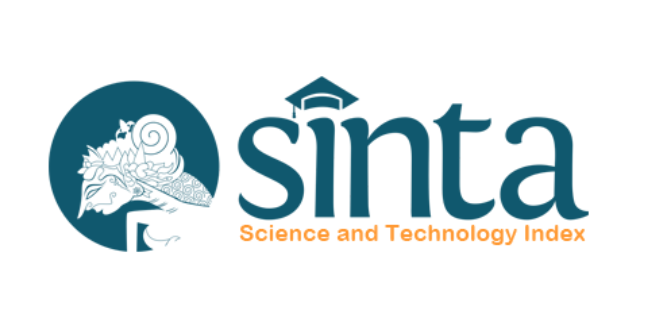ANALISIS PENGARUH TOTAL DRY SOLID BLACK LIQUOR TERHADAP EFISIENSI RECOVERY BOILER
DOI:
https://doi.org/10.5281/zenodo.8085820Keywords:
Black Liquor, Total Dry Solid, Recovery Boiler, EnergyAbstract
In the pulp and paper industry, a large amount of biomass (wood) has been used and produces by-products or residues resulting from the industry including wood bark, remaining logging and black liquor which is one of the main biomass resources that can be used for energy purposes. Aside from being a fuel, the recovery boiler process can convert black liquor into green liquor, where green liquor will be needed in the pulp production process. Writing this journal aims to determine the effect of total dry solids in black liquor on the efficiency of recovery boilers. The analysis was carried out using energy calculations in the recovery boiler for five days. From the calculation results it is known that there is a decrease and increase in boiler recovery efficiency, this is caused by several factors, including the heat absorption process experienced by the boiler feed water, the mass of black liquor, and the percentage of total dry solids. The total dry solid will affect the water content that will enter the combustion chamber, the higher the % TDS the more water content will enter the combustion chamber and this will affect the recovery efficiency of the boiler. The highest boiler recovery efficiency calculation results occurred on the first day, namely 65.24% and the lowest boiler recovery efficiency calculation results occurred on the fourth day, namely 62.96%.
Downloads
References
Aini, N. A., Agustina, S., Darmawan, R. (2023). Pra Desain Pabrik Biopackaging dari Bagasse dan Waste Virgin Paper dengan Proses Kraft. JURNAL TEKNIK ITS Vol. 12, No. 1, (2023) ISSN: 2337-3539 (2301-9271 Print)
Ferreira, D. J. O., Cardoso, M., & Park, S. W. (2010). Gas flow analysis in a Kraft recovery boiler. Fuel Processing Technology, 91(7), 789–798. https://doi.org/10.1016/j.fuproc.2010.02.015
Helwani, Z., & Bahruddin, dan. (2017). Simulasi Termodinamika Gasifikasi Black Liquor Pabrik Pulp Larut Kraft Sebagai Sumber Energi Terbarukan. Jurnal Sains Dan Teknologi, 16(2), 48–53.
Hidayat & Syahtaria. (2023). Black Liquor sebagai Sumber Energi Baru Terbarukan dari Industri Pulp dan Kertas. Jurnal Kewarganegaraan Vol. 7 No. 1 Juni 2023 P-ISSN: 1978-0184 E-ISSN: 2723-2328.
Holak, H. 2006. Hand book of pulp. Vol. 1. New York: Willey Interscience Publisher
Hougen, Olaf A. 1952. CHEMICAL PROCESS PRINCIPLES. New York: John Wiley & Sons inc
Morya, R., Kumar, M., Tyagi, I., & Pandey. A. K., Recent advances in black liquor valorization. In Bioresource Technology (Vol. 350). https://doi.org/10.1016/j.biortech.2022.126916
Naqvi, M., Yan, J., & Dahlquist, E. (2010). Black liquor gasification integrated in pulp and paper mills: A critical review. In Bioresource Technology (Vol. 101, Issue 21, pp. 8001–8015). https://doi.org/10.1016/j.biortech.2010.05.013
Sipahutar, E., Sutanto, W., Candra, R. A., & Pasaribu, F. I. (2022). Perhitungan Efisiensi Recovery Boiler Pada Pt Toba Pulp Lestari, TBK Calculation of Boiler Recovery Efficiency at PT Toba Pulp Lestari, Tbk. Majalah Ilmiah Teknologi Industri (SAINTI), 19(2), 64–67.
Yadav, D., Pachauri, N., Verma, O. P., Sahu, D., Ratan, J. K., & Sharma, T. K. (2022). Controller design for optimal operation of Multiple Effect Evaporator of paper mills. Results in Control and Optimization, 8. https://doi.org/10.1016/j.rico.2022.100137.
Downloads
Published
How to Cite
Issue
Section
License
Copyright (c) 2023 Authors and Publisher

This work is licensed under a Creative Commons Attribution-NonCommercial-NoDerivatives 4.0 International License.
The Authors submitting a manuscript do so on the understanding that if accepted for publication, copyright of the article shall be assigned to MACHINERY: Jurnal Teknologi Terapan as publisher of the journal. Copyright encompasses rights to reproduce and deliver the article in all form and media, including reprints, photographs, microfilms, and any other similar reproductions, as well as translations.Â
MACHINERY: Jurnal Teknologi Terapan and the Editors make every effort to ensure that no wrong or misleading data, opinions or statements be published in the journal. In any way, the contents of the articles and advertisements published in MACHINERY: Jurnal Teknologi Terapan are the sole responsibility of their respective authors and advertisers.








